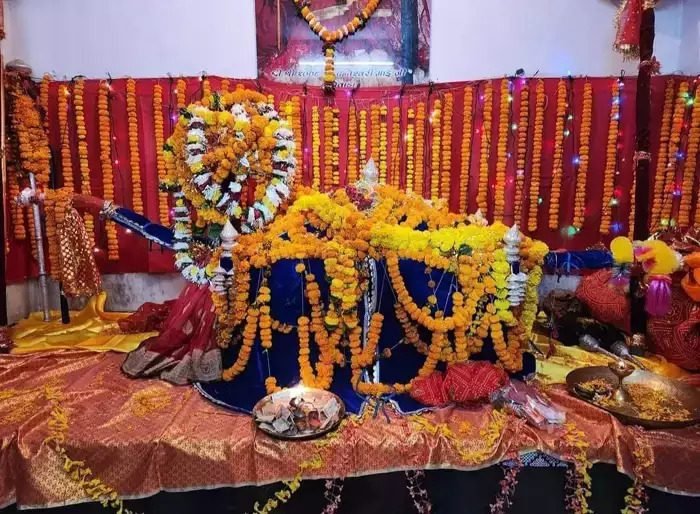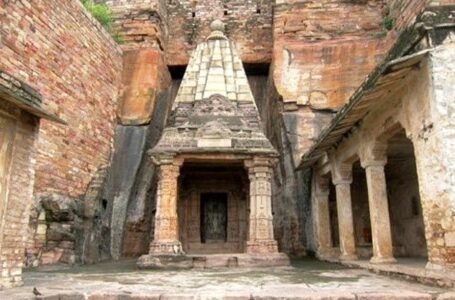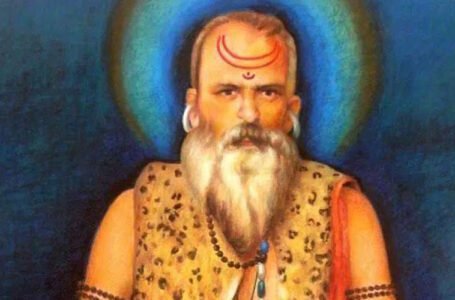Devi Mavli: Reverence, Rituals, and Cultural Impact

Devi Mavli is deeply venerated in certain parts of India, particularly in regions where folk traditions and local deities play a significant role in the spiritual lives of the people. Unlike the more universally worshipped gods and goddesses of Hinduism, Devi Mavli holds a special place in the hearts of her devotees, who turn to her for guidance, protection, and blessings in their daily lives. She is not just a deity but a symbol of power, nurturing, and resilience.
In this article, we’ll dive into the fascinating world of Devi Mavli, exploring her origins, the myths and stories that surround her, and the unique rituals performed in her honor. We’ll also look at the cultural and spiritual significance she holds for the communities that revere her, uncovering how her presence shapes their identity and traditions. Through this journey, we hope to better understand the profound connection between Devi Mavli and the lives of those who worship her.
The story of Devi Mavli is woven into the rich and vibrant fabric of Hindu mythology. Though she may not enjoy the widespread recognition of deities like Durga or Lakshmi, she holds a special place in local folklore, highlighting the significance of regional gods and goddesses in India’s diverse spiritual landscape. Devi Mavli is seen as the embodiment of a fierce and protective mother goddess, closely connected to the forces of nature—whether it’s the power of storms, the nurturing aspect of fertility, or the safeguarding of the land and its people.
The origins of Devi Mavli are deeply rooted in regional folklore, passed down through generations as part of a rich oral tradition. In some stories, she is said to have risen from the Earth itself, embodying the land’s fertility and nurturing essence. In other versions, she is described as the daughter of a powerful king or sage, chosen by the gods to protect humanity from harm.
Devi Mavli’s mythology often casts her as a formidable force against evil. Like other warrior goddesses such as Durga, she is depicted as a fierce and fearless protector of her devotees. Legends frequently tell of her battles against demons and malevolent spirits, showcasing her unwavering commitment to safeguarding those who seek her blessings.
Devi Mavli is revered in different ways across various regions of India, with each community interpreting her story and significance in its own unique way. In some areas, she is honored as a village goddess, deeply tied to the daily lives and traditions of the local people. In others, she is celebrated as a warrior goddess, fiercely protecting her devotees from natural disasters and other threats. While the rituals and practices surrounding her worship may differ, the central themes of protection and fertility remain consistent, reflecting her enduring role as a guardian and nurturer.
The worship of Devi Mavli is woven into the fabric of the traditions and customs in the regions where she is deeply revered. As with many local deities, the rituals dedicated to her are closely tied to the rhythms of daily life and the agricultural cycles that sustain her devotees.
Devi Mavli is worshipped mainly in parts of Rajasthan, Gujarat, Maharashtra, and Madhya Pradesh, where her shrines are found in both villages and cities. Her temples are often nestled near forests or mountains, places believed to be her sacred abodes. These sites hold deep spiritual significance, drawing devotees from near and far who come to seek her blessings and protection.
The rituals dedicated to Devi Mavli are simple yet filled with deep devotion. Worship often begins with heartfelt prayers, asking for her protection over homes, families, and crops. Offerings of fruits, flowers, and incense are commonly made, and in some cases, devotees offer goats or other animals as sacrifices to seek her blessings.
One of the most significant celebrations in her honor is Navaratri, the nine-night festival dedicated to goddesses like Durga and Mavli. During this time, communities come together to sing devotional songs, perform traditional dances, and carry out rituals to honor the goddess. The festival culminates on the final night with a grand procession to the temple, where devotees light oil lamps and offer prayers in a powerful display of collective faith and reverence.
Devi Mavli’s symbolism is rich and multifaceted, blending themes of nature, strength, and maternal care. Her worship reflects these elements, offering devotees a deeper connection to her divine presence and a greater understanding of the rituals performed in her honor.
Devi Mavli is often portrayed as a majestic and powerful figure, typically riding a lion or tiger. Her stance exudes strength and determination, with her right hand raised in blessing and her left hand holding weapons like a sword or trident—symbols of her power to shield her devotees from evil. The lion or tiger she rides represents her fearlessness and her ability to overcome any threat, while also reflecting her deep connection to the wild, untamed forces of nature.
In some depictions, Devi Mavli is shown with a child, emphasizing her nurturing side and her role as a protector of families and communities. She is often surrounded by animals, further underlining her bond with the earth and the natural world she fiercely guards.
Motherhood, protection, and fertility lie at the heart of Devi Mavli’s worship. She embodies the nurturing side of the divine, offering her blessings and protection to anyone who seeks her help. Devotees trust her to safeguard their crops, homes, and loved ones, providing a comforting sense of security and stability in their lives.
At the same time, Devi Mavli’s role as a fierce protector reflects a cultural understanding of women as both caregivers and warriors. Her dual nature—gentle and nurturing yet powerful and fierce—strikes a chord with many, especially women, who see her as a symbol of strength, resilience, and compassion.
Devi Mavli’s influence goes far beyond just religion; it deeply shapes the cultural fabric of the communities that worship her. Her presence can be seen in local art, music, literature, and even social customs, playing a significant role in how people live and express themselves.
In areas where Devi Mavli is worshipped, her influence is evident in many aspects of local culture. Devotional songs and folk music are performed in her honor, with many artists creating new hymns and songs dedicated to the goddess. These songs often tell her stories, praise her qualities, and ask for her blessings.
Devi Mavli is also a central figure in local festivals, especially harvest celebrations. In some regions, communities come together to celebrate the abundance of the land with feasts, dances, and rituals. These festivals not only honor the goddess but also help strengthen the bonds within the community.
One of the key aspects of Devi Mavli’s worship is her role as a protector of women and children. In many villages, women lead the worship of Devi Mavli, believing that her blessings provide them with the strength to face life’s challenges. Her worship empowers women, who view her as a divine figure that understands their struggles and offers them support. Moreover, Devi Mavli’s fierce and independent nature challenges traditional gender roles, allowing women to see themselves as both protectors and nurturers. The goddess represents an ideal of womanhood that is both strong and compassionate, a model that many women in these regions aspire to.
Although Devi Mavli’s worship is deeply rooted in tradition, it remains relevant in today’s world. As urbanization spreads and younger generations become more distant from rural customs, the worship of regional deities like Devi Mavli faces challenges. Despite this, there are ongoing efforts to preserve and revitalize her worship, ensuring she continues to hold a place in modern life.
In urban areas, where traditional practices are often fading, there has been a renewed interest in local deities like Devi Mavli. Temples dedicated to her have become hubs for community gatherings, introducing new forms of worship. Modern tools like television and the internet are now being used to broadcast prayers and devotional music, helping to bring the goddess closer to those who may not have access to her traditional shrines.
Cultural organizations and temple trusts are actively working to preserve Devi Mavli’s legacy by renovating old temples, documenting oral traditions, and promoting her worship in schools and other educational spaces. These efforts are vital in ensuring that future generations will not only continue to honor the goddess but also appreciate the cultural importance of her worship.
Devi Mavli is far more than just a regional goddess; she is a powerful cultural and spiritual force that has deeply influenced the communities that worship her over generations. While her worship is rooted in tradition, Devi Mavli’s significance extends into modern life, shaping not only religious practices but also local art, music, literature, and social norms.
Central to her worship is her role as a protector, especially of women and children. Devi Mavli embodies both strength and compassion, offering a powerful model for women in particular. Her nurturing yet fierce nature inspires women to take on leadership roles and stand strong in the face of adversity. She represents resilience, giving her followers the courage to navigate life’s challenges. In a society where gender roles are often strict, Devi Mavli’s dual identity as both a warrior and a mother challenges conventional expectations. She encourages a broader, more inclusive view of womanhood—one that embraces both the nurturing and the assertive aspects of femininity.
Her enduring influence is a testament to the deep connection her followers feel, not just through traditional rituals but also through the way she impacts their daily lives, helping them navigate both personal and social challenges.
In recent years, Devi Mavli’s worship has adapted to the changing dynamics of urbanization and modernization. As younger generations become more distant from rural traditions, preserving her worship has become a challenge. However, efforts to keep her legacy alive are flourishing. Temples dedicated to her are evolving into community hubs, and modern technology, including television and the internet, has made it possible for her teachings and rituals to reach people far from traditional shrines.
Thanks to the efforts of cultural organizations, educational programs, and temple trusts, the preservation of Devi Mavli’s worship is secure for the future. As a divine protector, she continues to offer strength and hope to her followers, maintaining her cultural significance just as she has for centuries. Devi Mavli remains a living, evolving symbol of devotion, her relevance in today’s world showing how deeply intertwined faith, community, and cultural heritage truly are.


